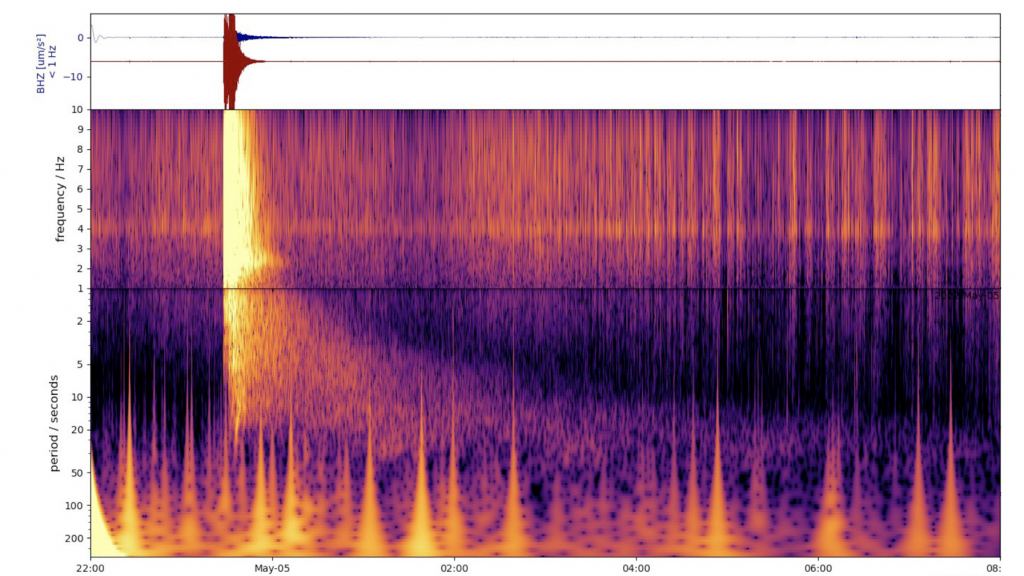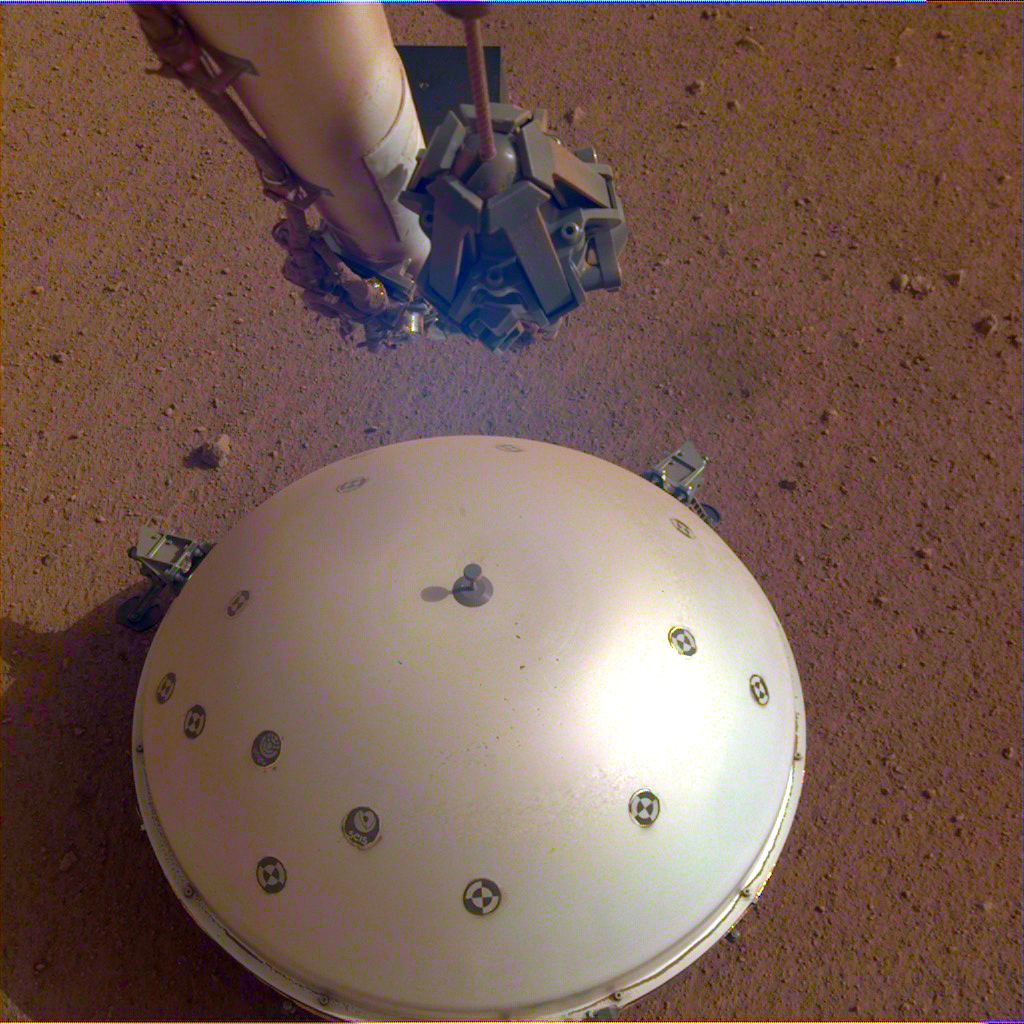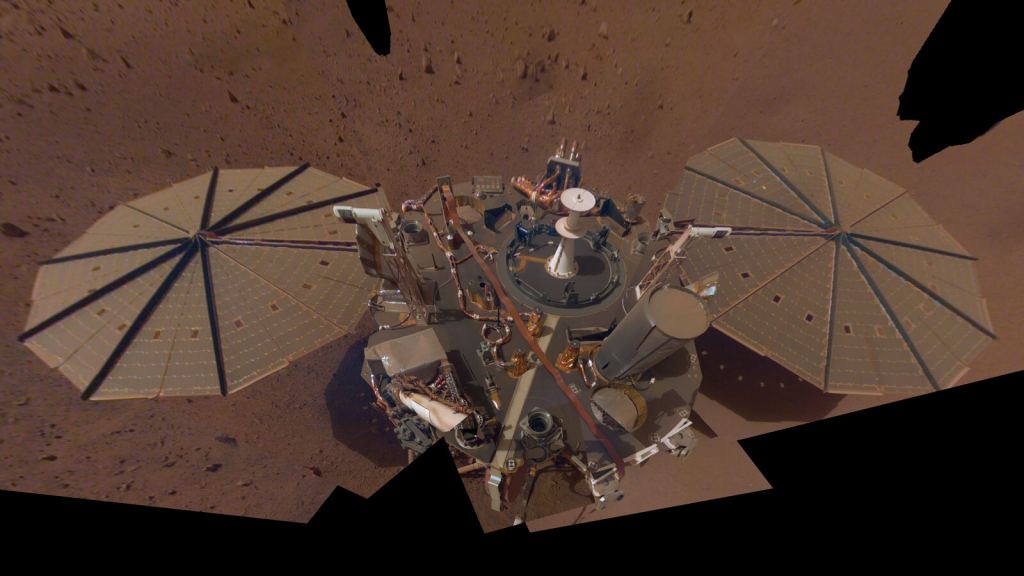InSight Just Detected a Record-breaking Marsquake: Magnitude 5!

May 4th is unofficially known in sci-fi circles as Star Wars Day (“May the Fourth Be With You”) here on Earth. But, on another planet, far, far away, the date is now infamous to one of its robotic inhabitants. That’s the day the Mars InSight lander felt one of the strongest marsquakes ever to hit that world. It registered magnitude 5 and was the latest 1,313 quakes the lander detected since it arrived on Mars in 2018. InSight scientists are still analyzing the data to figure out exactly where on Mars the quake struck, and what may have caused it.
Here on Earth, we get quakes all the time because our planet is geologically quite active. Just as an example of one spot that shakes a lot, the Big Island of Hawai’i can experience upwards of 300 quakes a day, particularly if one of its volcanoes is getting ready to erupt. Countries along the so-called “Ring of Fire” in the Pacific also experience a lot of quakes due to tectonic plate motions and volcanic eruptions. Many happen when geological faults snap, or there’s a sudden movement of one or more tectonic plates. Earth’s continents and oceans ride along on top of these pieces of crust. There are 15 major plates and several smaller ones. They jostle each other and often that motion translates to shaking at the surface.
All this activity provides evidence about how active our planet really is. In addition to quakes, we have mountain-building processes, volcanic activity, plate motions, and activity even deeper in the center of our planet. Studies of seismic waves from earthquakes provide a way to “peek inside” Earth to get an idea of its structure.
Mars “Geology” and a “Big One” Marsquake
On Mars, however, things are quite a bit different. For a long time, planetary scientists suspected that the Red Planet was geologically dead (or dormant). Yet, the surface shows evidence of volcanism, as well as what’s called a hemispheric dichotomy, which simply means that the northern and southern hemispheres are very different from each other in terms of cratering and average altitudes. In addition, the crust varies in thickness between the two halves of the planet. So, clearly, the planet isn’t completely dead. It’s more like planetary scientists just don’t know enough about the Martian interior yet.

It’s not clear why this dichotomy exists, and it’s even less clear about what’s happening inside Mars. It may have had some version of plate tectonics early in its history, although that’s still under debate. What isn’t so debatable is the existence of Marsquakes on the Red Planet. And, the detection and measurement of those quakes is why the InSight Lander was sent to Mars. It’s detecting them using a very sensitive seismometer and in the process, showing what’s inside Mars. Each time Mars “shakes” from a quake, the seismic waves pass through all the layers in the planet. As they travel, they reflect off the various layers of the crust, mantle, and even the core. This is very similar to the way geologists on Earth use earthquake waves to “sense” structures inside our planet.
“Since we set our seismometer down in December 2018, we’ve been waiting for ‘the big one,’” said Bruce Banerdt, InSight’s principal investigator at NASA’s Jet Propulsion Laboratory. “This quake is sure to provide a view into the planet like no other. Scientists will be analyzing this data to learn new things about Mars for years to come.”
Good News Followed by Bad News

While scientists were taking in the latest Marsquake data and exploring what it might tell them, InSight lander gave them some unsettling news. It had been having problems with its solar panels, due to dust accumulation on the solar panels. This affects the power production needed to keep the instruments running. On May 7, 2022, the available power dropped so low that the system went into safe mode. The lander suspended all unnecessary operations indefinitely as technicians figure out what to do next. InSight is facing Martian winter at its location, which means there’s more dust in the air to settle on its solar panels. That, in turn, filters the sunlight needed to recharge the spacecraft’s batteries. This will be a recurring problem as winter advances, but shutting down is the best way to protect the lander and its instruments.
In the meantime, InSight scientists have a mound of Marsquake and other data to study. What they learn will help them understand more about the structure of the Red Planet, and the structures of other rocky worlds in the solar system.
For more information:
One Full Year of Seismic Data Collected by InSight Includes 500 Quakes
Geology of the InSight Landing Site on Mars
The post InSight Just Detected a Record-breaking Marsquake: Magnitude 5! appeared first on Universe Today.
Universe Today
Go to Source